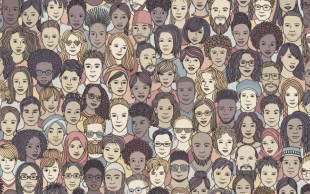A picture is worth a thousand words.
Or so says the Instagram caption placed underneath an acquaintance’s picture which may be the thirtieth or so upload on your timeline that celebrates the work done by Yayoi Kusama.
Alike to the works done by artists, we fail to realise that we too, are walking pieces of ‘art’ that portray and tell a story about ourselves with our actions. A subtle scratch on the neck as you are getting briefed by your team leader to the way you fidget when you realise a conversation is going nowhere can be attributed to a form of communication known as body language.
By understanding body language, it will enable you to create a formidable impression of yourself in the presence of others. Just imagine having the same level of hype as a credible worker and businessman, like how the ’Infinity Mirror’ is known to be an exceptional art piece that never fails to enthral those who’ve seen and experienced it themselves.
The definition of body language is derived as nonverbal communication executed by using both ‘conscious and unconscious’ actions that communicates the sender’s ‘attitudes and feelings’.
This form of nonverbal communication thus enables people to deliver their emotions and perspectives towards certain things. Pats on the back are signs of demonstrating power over another individual while sometimes neck rubbing whilst having a conversation may mean that one finds the conversation topic, or the other party, a literal pain in the neck.
It is important to understand body language because it plays a vital role in building an impressionable and positive image for yourself.
In the year 1960, John F. Kennedy scored an unexpected win against Richard Nixon during the first televised debate aired in the United States. Kennedy’s healthy and calm appearance appealed to viewers, while Nixon literally paled in comparison; his recent discharge from the hospital and refusal to wear make up at first gave him quite an ill look.
A key point to note was that the minority who listened to the debate via radio assumed that Nixon was the clear victor, but the 74 million Americans who watched the debate on live television hailed Kennedy as their champion.
Despite Nixon making the effort to do some damage control sustained from this debate, it still was not enough to guarantee his win during the elections.
This incident made politicians around the world realise the impact of body language.
It proved that first impressions and how you carried yourself did matter when you wanted to win the hearts of people, or in this case, the position as the President of the United States of America.
Understanding body language will also prove to be an asset in building successful connections with others, particularly in business.
A 2008 documentary set up an experiment where they sent two fake customers to two car salesmen.
The end result showed that the customers were more willing to purchase a car from the salesmen that they perceived to be more genuine and confident.
The preferred salesman, upon being observed by body language experts, showed a mastery in body language; he made an effort to ensure that he was presentable before the customers saw him, had a big smile and eye contact when he greeted the customers, and held an ace posture throughout.
Unlike the other salesman, who did not have much eye contact with the customers and appeared to be more distant instead. From this, it shows that utilising good body language can prove to be a lethal tool when mastered, which makes every moment in work rewarding for you.
To kick off the start of a satisfactory and positive body language in you, you need to reflect and get insight on how your body language comes off to others now.
You can start by gathering feedback or constructive criticism from your fellow colleagues or family members; do I come across as aloof?
What gives that away physically, perhaps is it the way I walk or stand?
Does my dressing reflect me negatively in anyway and so on.
Once you have had the general lay down on what you need to rectify, make the conscious effort to practice and perfect it.
If you realise that you have a distinct body language action habit that betrays a particular image you are going for, search for a feasible and realistic solution that works best for yourself.
Bear in mind that while some body language behaviour can be applied universally (a smile to indicate happiness and scowls to indicate disgust), it is crucial to take note of how body language changes in a cultural context as well.
The most prominent difference is comparison between Asian and Western cultures.
In Asia, a greeting between businessmen often includes bowing other than the common handshake (this applies especially when there is seniority involved; juniors are expected to bow to their elders as a sign of respect).
Maintaining an extended length of eye contact in certain countries can also come across as you being rude or worse, trying to pick a fight with the other party.
So if you want to avoid the risk of painting the wrong kind of ‘picture’ of yourself to others in business, you will have to be pro-active in doing research about their respective culture and adjust accordingly.
At the end of the day, it all boils down to the fact that first impressions do count for a lot when you want progress especially when you are doing business, a career that is peppered heavily with face-to-face meetings on a daily basis.
Banking on your credentials solely can only bring you so far in your career.
Bringing back the case of Richard Nixon and John F.Kennedy’s presidential race, everyone was bent on the idea that Nixon would win due to his impressive portfolio in politics compared to Kennedy until the first televised debate happened.
Again, It pays to allocate a reasonable amount to invest in improving your brand image by figuring out the ‘picture’ that you paint to others with your body language and appearances.
Work hard enough and soon, at the end of the day, you will find yourself being the great masterpiece that you deserve to be in the first place.

















